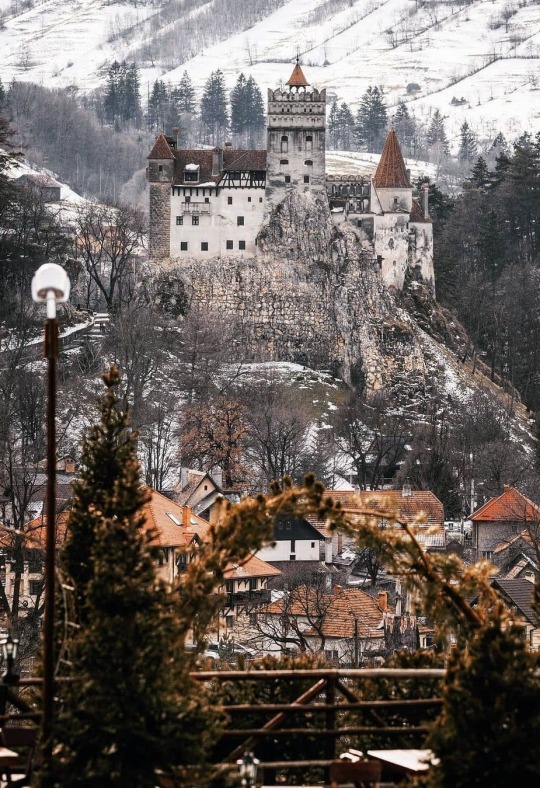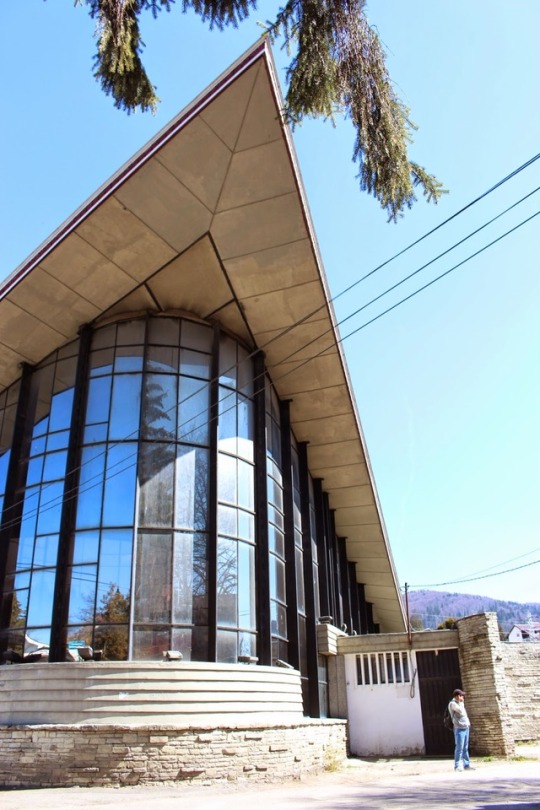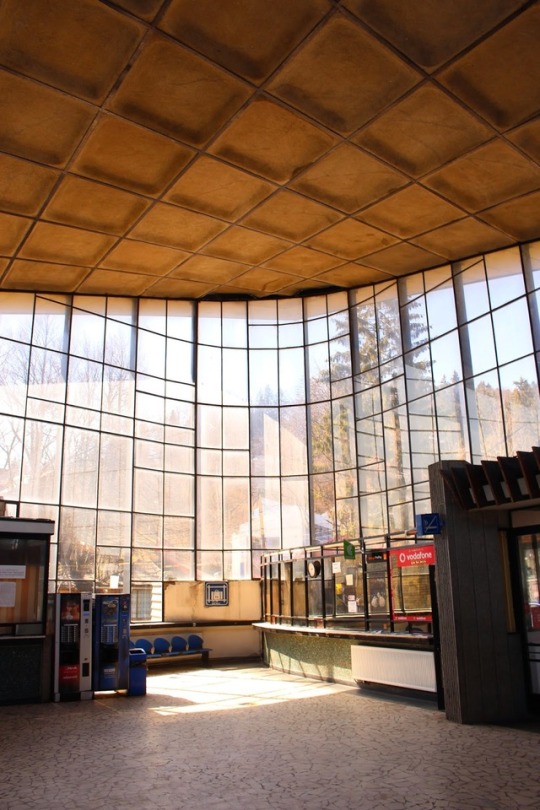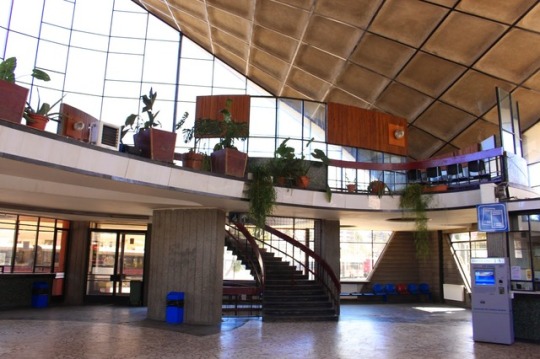#brașov county
Explore tagged Tumblr posts
Text




Transilvania & Bucovina (2) (3) (4) by SBA73
Via Flickr:
(1) El castell de Hunedoara / The castle of Hunedoara. (2) This ugly, ruined industry was build just next to the beautiful castle of Janos Hunyadi in Hunedoara. (3) A house in the old quarter of Sibiu.
#castle#historic buildings#historic landmark#fortifications#industrial landscape#houses#construction#romania#transylvania#hunedoara county#sibiu county#brașov county
12 notes
·
View notes
Text


Râșnov, Brașov County, Transylvania, Romania
Maria Teneva
0 notes
Text

Young Saxon woman from Cristian, Țara Bârsei (Burzenland, a historic and ethnographic area in Brașov County, southeastern Transylvania, Romania). 1913
26 notes
·
View notes
Note
Do you have any specific headcanons about Trevor's childhood? :>
Oh boy, do I! These are kinda general, but they should suffice.
In a fic I never ended up getting very far in, I had a much happier version of Trevor’s early life in mind. He’s from a big family (the youngest of 5 brothers) and lived pretty decently despite the exile and all that jazz. He’s pretty rambunctious, but he’s still got the understanding that he needs to prove himself of being a capable hunter and worthy of inheriting the Vampire Killer.
For the version of Trev in my current fic (for which all hcs exist now), it’s a tad spoilery(?).
Trev loses his parents fairly young (in a pretty traumatizing way for a 14-year-old especially), but his time before that was honestly not bad. His parents obviously loved him and made sure that he was well-trained and had sufficient knowledge to navigate inter-class social situations, hunt monsters, understand basic magic and alchemy, and read. He doesn’t have much in the way of worldly possessions (besides heirlooms from Leon’s day that he’s set to inherit), but he’s not really the kind of kid that cares about all that. He doesn’t have siblings, but he sometimes had friends - he cycled through them pretty quickly once any of them found out he was an exile/excommunicated and their parents didn’t want their precious godly kids playing with a Belmont. That’s why he’s so attached to his friends as an adult; he finally has people who care about him outside of his parents.
That’s all to say that he’s content to climb trees by himself or build little stick forts out in the woods.
He’s pretty mature compared to a lot of other kids in Brașov since he has the duty of his entire bloodline on his tiny shoulders, and he’s pretty good at winning people over when he and his family are desperate for resources. He more-or-less understands why he and his parents live the way they do, but it doesn’t stop him from being lonely and wistful that maybe one day he might have friends.
That said though, he’s self sufficient and can contribute to the household by hunting and fishing and all that.
When he does end up alone, it’s this precociousness that allows him to find help from others despite some villagers’ lack of assistance and distain for him. Even as a kid he can charm his way into making allies. He travels around what is now Brașov county looking for odd jobs and occasionally hunting particularly dangerous creatures in exchange for coin or a place to sleep for a night or two. He does this until he’s an adult. It’s during his later childhood years that he sees the good in people, and it comes through in those in poverty or fellow exiles like him. He doesn’t really blame anyone for his situation and sees it as his ultimate test before Drac tries to murder humanity.
In conclusion, liddol Trev is the lonely kid that plays in the dirt but is also startlingly mature and has the weight of his ancestors on his shoulders at all times.
16 notes
·
View notes
Photo
Brașov is a city in Transylvania, Romania and the county seat of Brașov County. Brașov is located in the central part of the country, about 166 km (103 mi) north of Bucharest and 380 km (236 mi) from the Black Sea. It is surrounded by the Southern Carpathians and is part of the historical region of Transylvania. Wikipedia.

Brasov, Romania (by George Nutulescu)
5K notes
·
View notes
Photo

Brașov County @emp_vision
#Brașov County#@emp_vision#Romania#Transylvania#ig_transylvania#landscape_focus_on#landscape_captures#landscape_photography#landscape_collection#landscape_lovers#landscape_nightscape#landscape#landscapes_unlimited#landscapes_captures#landscapes_lovers#landscapes_focus_on#landscapes#europe_greatshots#europe_moments#europe_vacations#europe_gallery#europe_style#europe_pics#followforfollow#bbctravel#bbc_travel#natgeo#nature photography#nature_perfection#nature_good
48 notes
·
View notes
Video
youtube
Timelapse The old clock tower of the Evangelical Church (Biserica Evanghelică CA) at Republicii Street (Strada Republicii) in Rasnov (Râșnov). View from Râșnov Fortress (Romanian: Cetatea Râșnov, German: Rosenauer Burg)
#rasnov#romania#timelapse#tower#clock#clocktower#brașov county#râşnov#medieval#landscape#adventure#explore#travel#photography#europe#europe travel#old town road#road trip#video#youtube#youtubevideo#skovonski#transilvania#Siebenbürger Sachsen#siebenbürger
1 note
·
View note
Photo

Centura Brașov, Brașov.
18 notes
·
View notes
Photo

Брашов, Румыния
Олег Пелин | Фотография | Карта
#архитектура#русский тамблер#русский блог#Брашов#Румыния#городской пейзаж#русский тумблер#путешествия#город#фото#по-русски#Brașov County#Centrul Nou#Oleg Pelin#Brasov#Romania#Олег Пелин#Brașov#Sunset#Architecture#Clouds#Summer#Travel#Green#Rain#Water#Sun#Light
2 notes
·
View notes
Text
Nature, Earthquakes, Romania
Seismic hazard for Romania from the Global Seismic Hazard Assessment Program (GSHAP). 455 July 10 AD. It destroyed several towns and villages in Transylvania. C. 543 AD. A 7.5 magnitude earthquake with the epicenter in Dionysopolis, Dobrich Province, Bulgaria. Large tsunami on the Dobrujan shore of the Black Sea. The Roman fortress of Capidava, Constanța County, is destroyed. 815 August AD.…

View On WordPress
#1977#2.20 pm#7.5#Album Oltardianum# Adjud# Caraș-Severin County# Cluj County# Dobrich Province# Focșani# năruja# Slovakia# southern Germany# Szatmár County# Timiș County#Balkan#Banloc#black sea#Brașov#Brăila#București#bug#Bulgaria#byzantine#capidava#carei#carlton bloc#carpathians#Chișinău#Constanta#Constantia
0 notes
Photo

- The Mogoșoaia Palace of Ilfov in Romania. -
~ “Mogoșoaia Palace, historical building in the town of Mogoșoaia, Ilfov county, Muntenia, Romania, located about 15 km from the centre of Bucharest. The complex contains the building itself, its courtyard with the watch tower, the cuhnia (kitchen), the guest house, the ice house and the vault of the Bibescu family, as well as the ‘Saint Gheorghe’ church located near the walls of the courtyard. The Mogoșoaia Palace was in the possession of the Brâncoveanu family for approximately 119 years, then passing into the ownership of the Bibescu family. The palace was built until 1702 by Constantin Brâncoveanu in the Brâncoven style, a style previously used in another voivode's palace, built by him in Potlogi. The work was finished on September 20, 1702, according to the inscription on the east side of the palace. The date of the start of construction is not known, but it is known that Brâncoveanu started buying land in the area in 1681.
The Brâncovens after the death of the ruler (1714-1832).
After 1714, when Constantin Brâncoveanu was executed in Constantinople together with his sons, all the family's wealth was confiscated by the Ottomans and the palace was turned into an inn. Redeemed by the ruler Ștefan Cantacuzino, it then returned to the great ban Constantin Brâncoveanu, the ruler's grandson, and remained in the family's possession until the beginning of the 19th century. The palace was devastated by the Ottomans during the Russian-Turkish war of 1768-1774, because the great ban Nicolae Brâncoveanu had sided with the Russians in the conflict. Another destruction of the palace took place on the occasion of the revolution of 1821 when the last descendant of the Brâncoven family, Grigore Brâncoveanu, fled to Brașov and the building was occupied by the Pandi.
Residence of the Bibescu family.
After Grigore's death in 1832, the Mogoșoaia property was inherited by his adopted daughter, Zoe Mavrocordat, and through her marriage to the ruler Gheorghe Bibescu, concluded in 1826, it passed into his family. The palace was renovated between 1860–1880 by Nicolae Bibescu, who also built the family vault in the palace park, and the nearby Elchingen villa. The palace was still administered by the Bibescu family who, however, moved to the new villa and the old building remained uninhabited. This until 1911, when Maria-Nicole Darvari sold the palace to her cousin George-Valentin Bibescu, who gave it as a wedding present to his wife, Martha.
The era of Martha Bibescu (1912-45).
Martha Bibescu took care of renovating the palace starting in 1912. During the First World War, the renovation works were hampered by further destruction suffered as a result of the German bombings. During the German occupation of Bucharest and southern Romania, Princess Martha Bibescu remained in the capital, taking care of Queen Maria's hospital and living in the palace for a while. Returning to the country after she had gone to London, being accused of collaborating with the German troops, Martha Bibescu resumed the renovation works after 1920, spending a large part of the wealth collected from the books she wrote. Thus, the palace was re-inaugurated in 1927, with some interior works continuing, however, until 1935. While it was owned by Marthea Bibescu, the palace was visited by personalities such as August von Mackensen, Charles de Gaulle, Marcel Proust, Nicolae Iorga, King Alfonso XIII of Spain, King Carol I of Romania, Queen Maria of Romania, King Ferdinand I of Romania or Winston Churchill. During the Second World War, the palace was a meeting place for allied diplomats, being, for a few months, rented to the Swiss legation in Romania.
Under the communist regime (1945-89).
After March 6, 1945, the estate was forcibly nationalised by the communist government, Martha Bibescu obtaining from the authorities the declaration of the palace as a historical monument, which she still owned. However, the princess left the country for good in September 1945, leaving the palace to her daughter Valentina and her husband, Dimitrie Ghika-Comănești, son of Eugen Ghica-Comănești. In 1949, the palace was also nationalised, Valentina and Dimitrie Ghika-Comănești were arrested. By 1957, the building was ravaged and ransacked, the art collections stolen and dismantled. It was only in 1957 that the palace became the seat of the feudal section of the National Art Museum, being restored starting in 1977.
After 1990.
Currently, the Mogoșoaia Palace houses the Brâncoveneasc Art Museum and is an important tourist attraction. Starting from 2010, the legal heirs of Marthea Bibescu, who live in Great Britain, are fighting in court for the recovery of the complex, or if necessary for obtaining adequate compensation.” ~
5 notes
·
View notes
Text

Amfiteatrul Transilvania, Moieciu de Sus, Brașov County, Transylvania, Romania
Taken by Razvan Mirel
0 notes
Photo

1847 (copy after) Theodor Sockl - Clara Adelheid Soterius von Sachsenheim, the artist’s wife
(Brașov County Museum of History, the original is lost)
65 notes
·
View notes
Video
tumblr
Fundata is a commune in Brașov County, Romania, in the historic region of Transylvania. It is 42 km from where we stayed in Brașov.
26 notes
·
View notes
Photo



Predeal Railway Station, Brașov County, Romania.
Built 1969, designed by Irina Rosetti who was the architect of the station at Tulcea. The outside of the station can be seen in this video. Photographs by Alexandru Mircea.
#Predeal Railway Station#Gara Predeal#Brașov County#Transylvania#Romania#Socialist Republic of Romania#Republica Socialistă România#România#railway station#modernism#brutalism#Socialist Modernism
0 notes
Photo

sebastiandumitru Brașov County
#sebastiandumitru#Brașov County#brasov#Transylvania#Romania#europe#europe_travel#map_of_europe#stayandwander#naturelovers#creatorswillcreate#topeuropephoto#moodygrams#moody_nature#moody_captures#cityscape#cityscape_lovers#city street#europe_destinations#destination_wow#nature photography#nature_lovers#nature_seekers#nature_good#nature_wizards#nature_photo#streetview#streetscape#street_focus_on#street_vision
155 notes
·
View notes